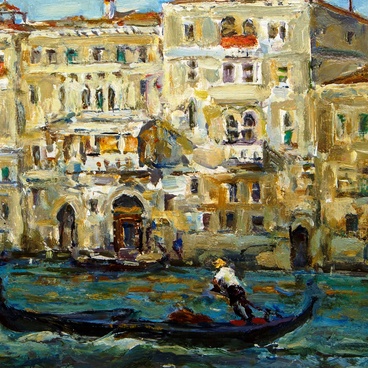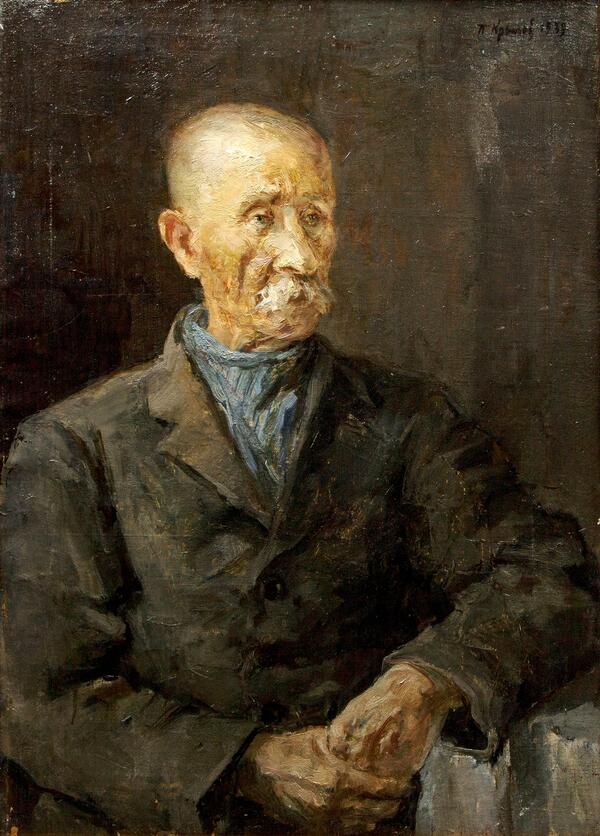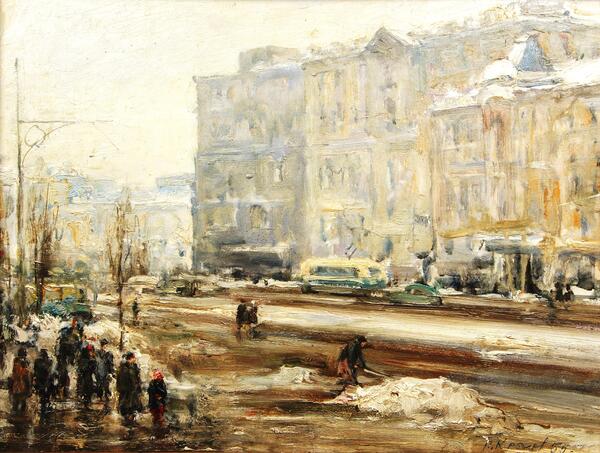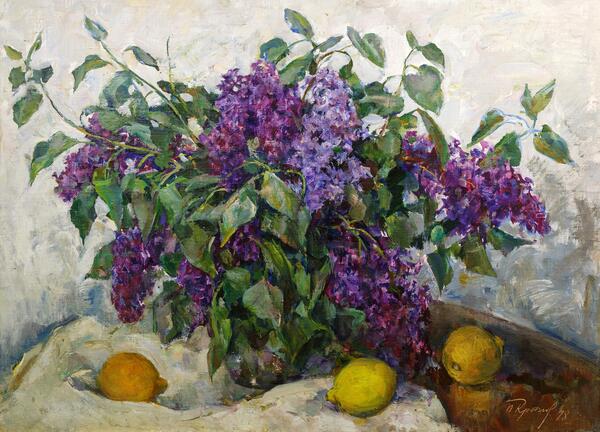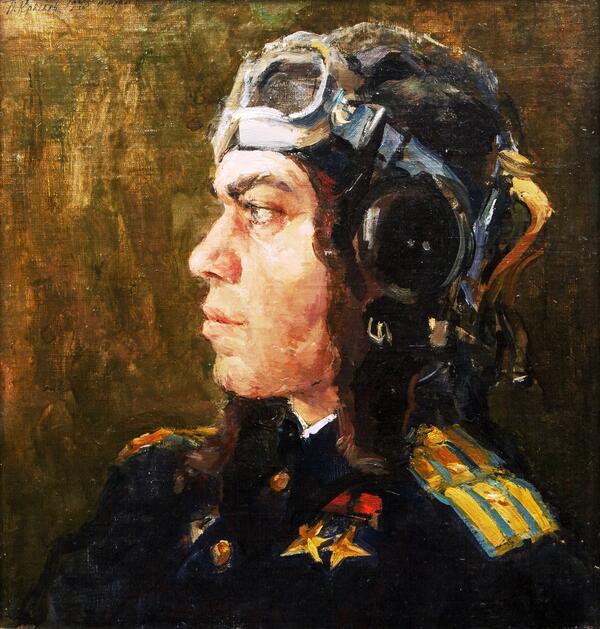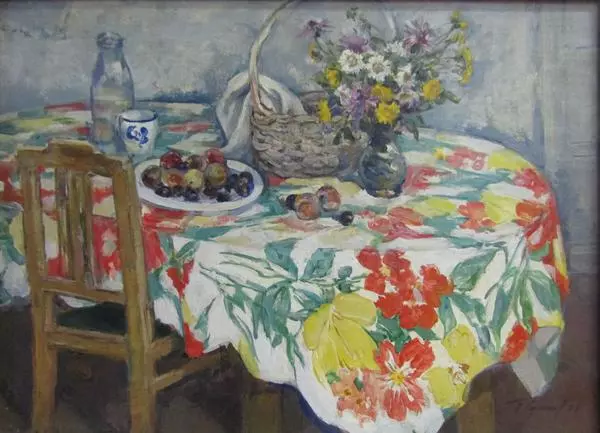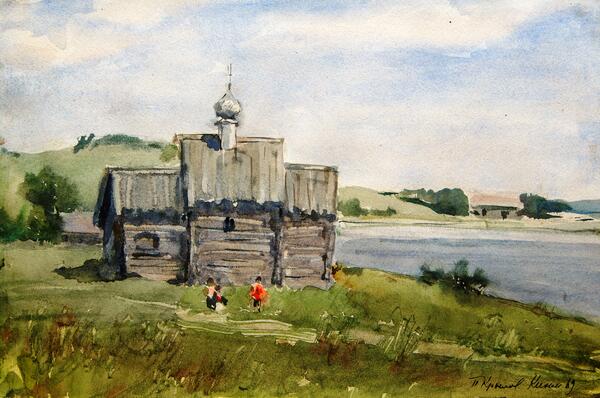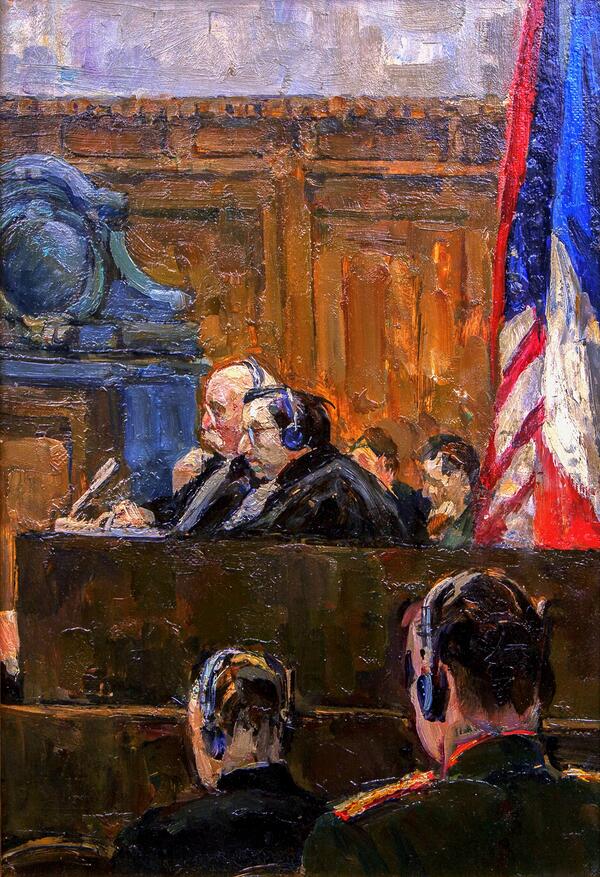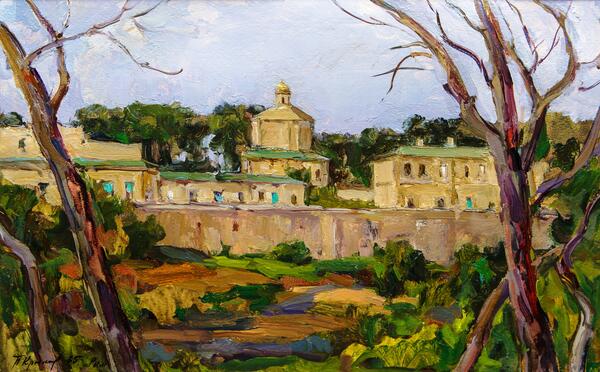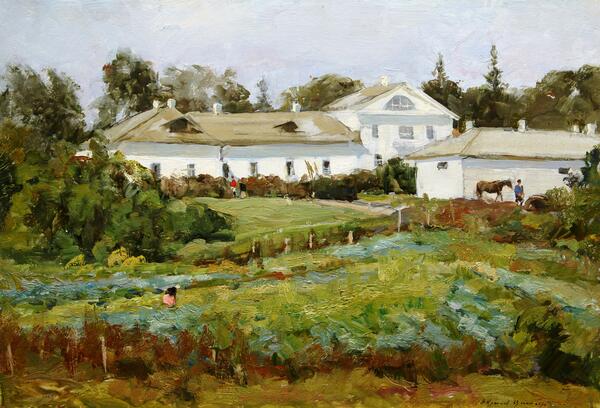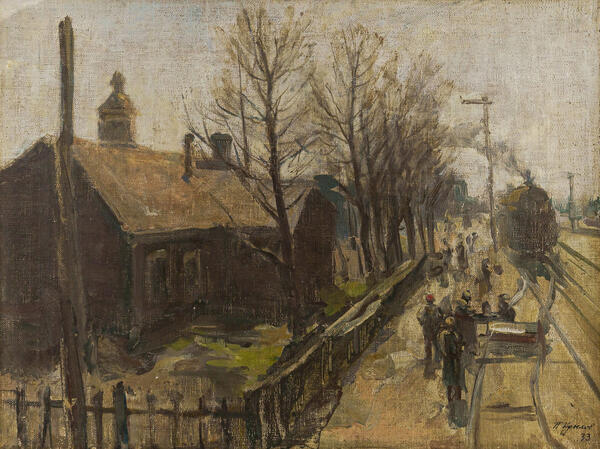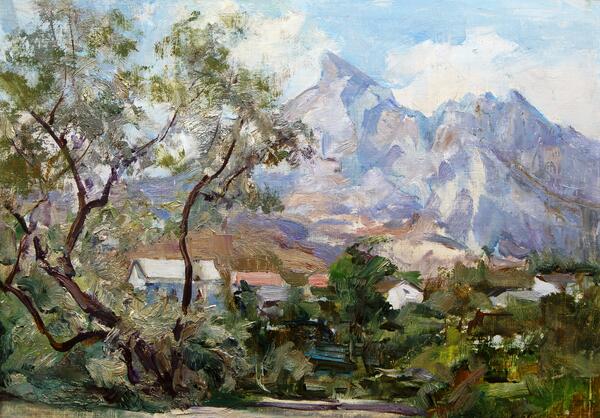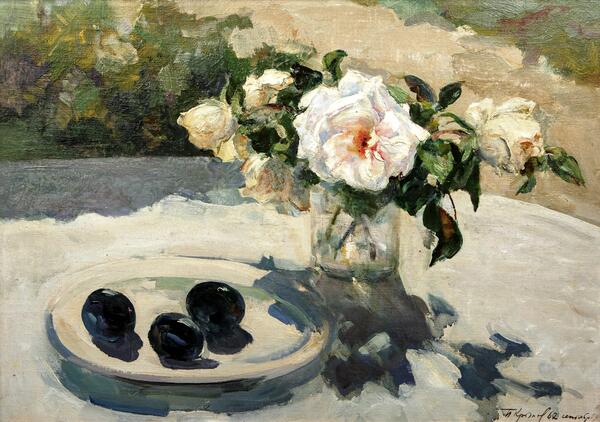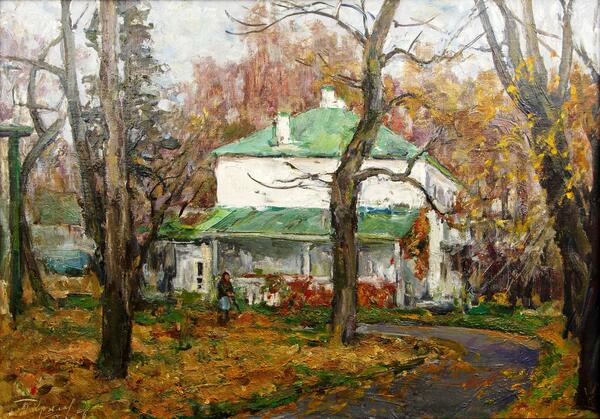The Porfiry Krylov Museum in Tula presents a series of works dedicated to Samarkand. Porfiry Nikitich visited this ancient Central Asian city in 1940 while on a business trip on behalf of the Organizing Committee. He was joined by fellow artist Konstantin Dorokhov, who later recalled this trip in his book “Notes of the Artist”:
Ulugh Beg, Samarkand
There was an opportunity to visit Central Asia, go to Tashkent and Samarkand. Having once again taken advantage of the Organizing Committee’s business trip to survey the work of local unions of artists, me and Porfiry Krylov are going to Tashkent… It’s the beginning of April and the weather is cold, it is either snowing, raining or hailing. We run around in the rain from dawn till dusk, trying to finish the surveying artists as soon as possible to save time for sketches… Oh, how Samarkand has changed since my last visit ten years ago, in 1930. European culture’s seeping in. Gone is that exotic variety of national robes, a whole block was demolished before the Registan, a square was set up in its place, one of the mosques is gone, and the tilted tower of Ulugh Beg, which threatened to fall down any moment, was repaired so that it fell out of the ensemble — it became absolutely vertical. Somehow it’s very sad to visit places after ten years, and see how much gets lost in the past…
The painting by Porfiry Krylov “Ulugh Beg, Samarkand” depicts one of the main buildings of Samarkand — Ulugh Beg Madrasa. It was built in the 15th century by the ruler of the Timurid Empire and scientist-astronomer Ulugh Beg. This is the oldest Muslim spiritual, educational and religious building, which together with the Sher-Dor and the Tillya-Kari Madrasa forms a harmonious architectural ensemble of Registan Square in Samarkand.
The artist depicted the main eastern facade of the building, the main element of which is a majestic portal with three recessed entrances. Four 33-meter-high minarets once stood at the corners of the madrasa, but only the eastern ones have been completely preserved. The facade of the building is richly decorated with mosaic ornaments, glazed bricks and carved marble. Ulugh Beg Madrasa is a striking example of Middle Eastern classical architecture.

